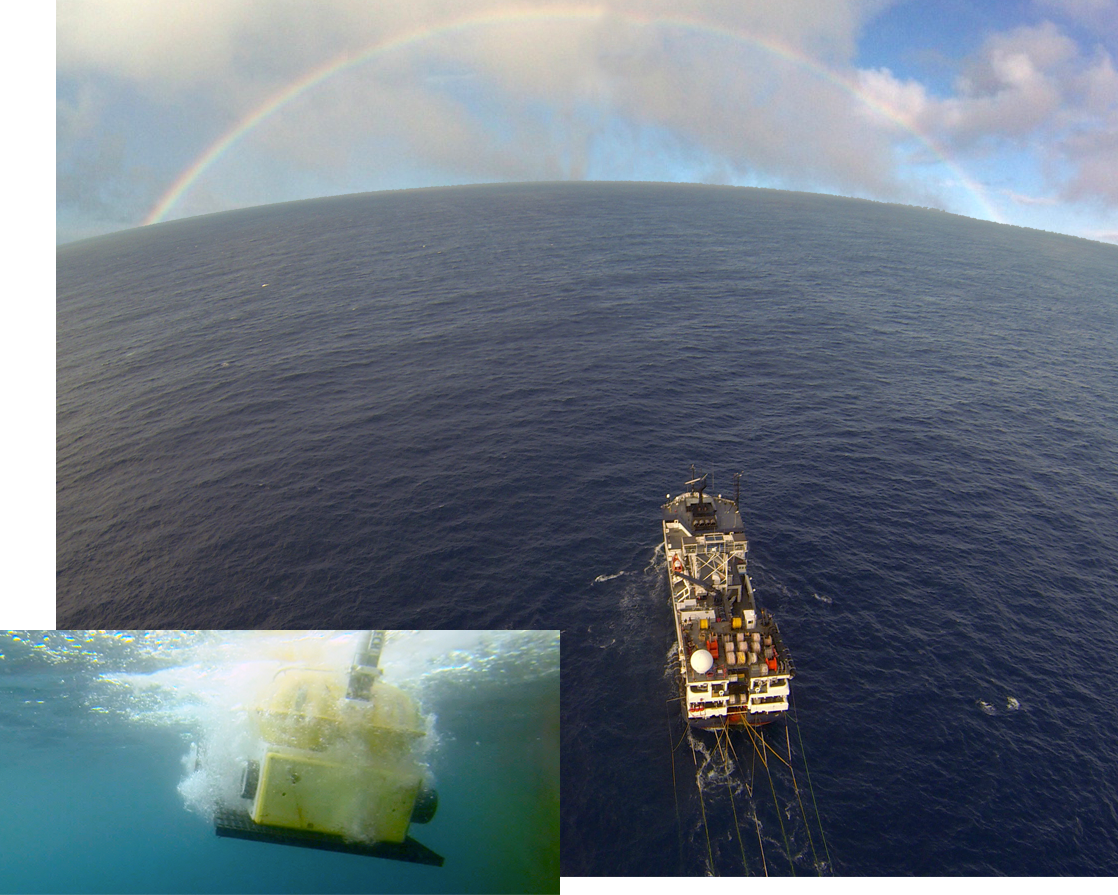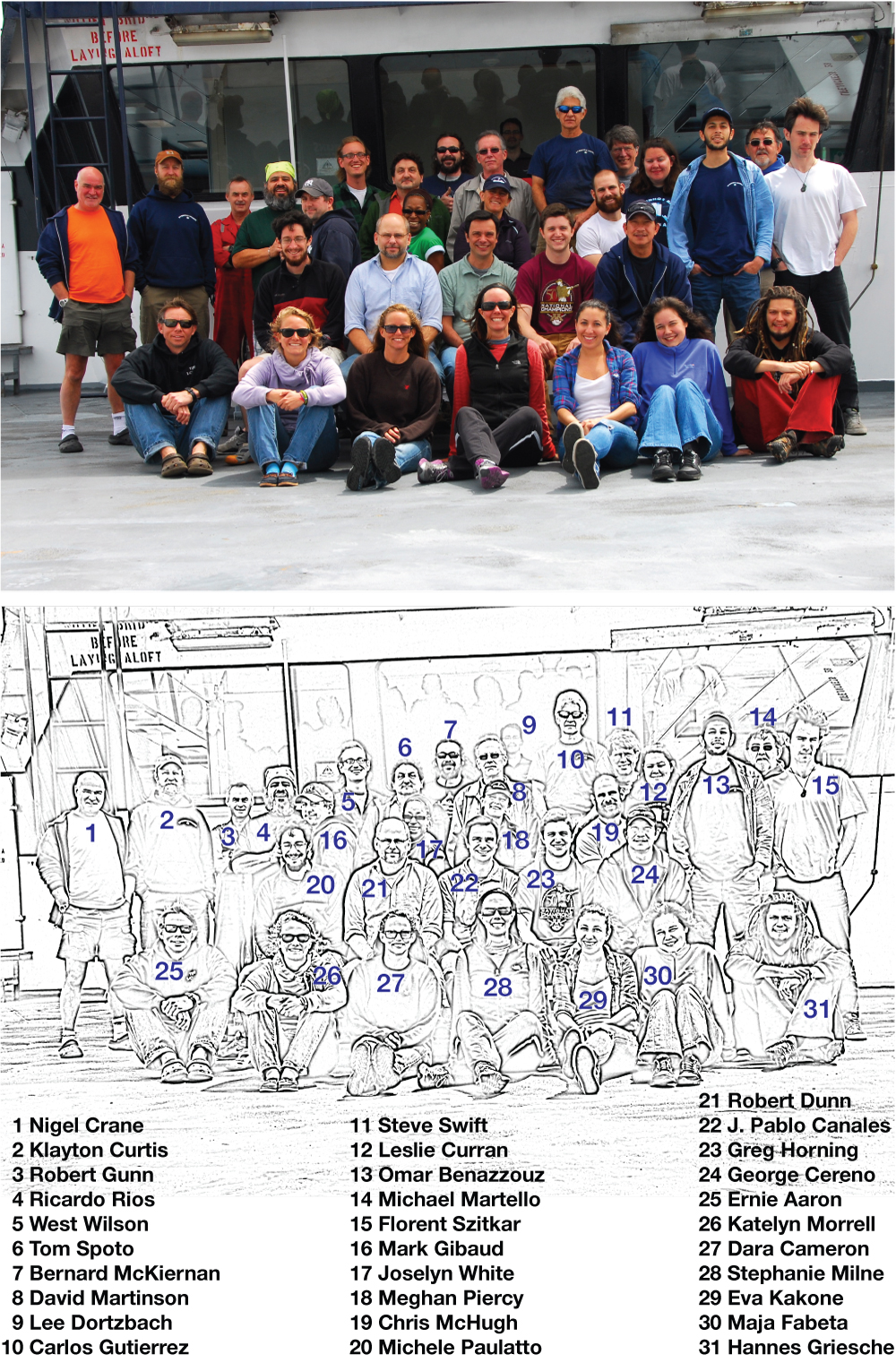MARINER
Seismic Investigation of the Rainbow Hydrothermal Field and its Tectono/Magmatic Setting, Mid-Atlantic Ridge 36deg 14'N

Heat extraction from the Earth via hydrothermal systems along mid-ocean ridges (MORs) is a fundamental process affecting the Earth: hydrothermal systems extract approximately one third of the global yearly heat loss through ridges and are a primary means of chemical exchange between the solid Earth and the oceans. It is generally believed that sections of MORs with greater magma supply host a greater abundance of hydrothermal systems. While this simple conceptual model provides a framework within which to understand hydrothermal heat generation, the relative roles of magmatic heat input, tectonic heat advection, and faulting in controlling ridge thermal structure and hydrothermal circulation are still poorly understood. This is particularly important for hydrothermal circulation at slow- and ultra-slow spreading ridges, where venting occurs in a variety of host-rock lithology and tectonic setting. The Rainbow hydrothermal field (RHF) is a methane-, hydrogen- and iron-rich system located on an ultramafic massif within a tectonized non-transform discontinuity (NTD) of the Mid-Atlantic Ridge, where current models predict that long-term magma supply should be very low. Yet Rainbow vents high-temperature fluids at high flow rates, which is difficult to explain without a magmatic heat source. This conundrum stands in the way of our ability to develop general models for the roles of magmatic heat input and tectonic faulting on controlling ridge thermal structure and hydrothermal circulation, particularly for hydrothermal systems located in regions dominated by ultramafic lithologies, which are common at slow and ultra-slow MORs.
This project consists of a three-part seismic study of the physical architecture of the crustal and upper mantle at Rainbow to address the following fundamental question: What is the relationship between magmatism, faulting, substrate lithology, and hydrothermal circulation at the Rainbow hydrothermal field? A combination of 3D and 2D high-resolution active-source seismic tomography, 2D multichannel seismic reflection, and passive microearthquake monitoring will allows to determine the tectonic and thermal structure, melt content, and microseismicity around and beneath the RHF to determine:
- The nature and location of the heat source driving hydrothermal circulation at RHF.
- The nature and origin of the Rainbow massif.
- The role of the local stress field on focusing hydrothermal discharge.

Funding Agencies
This research is supported by the US National Science Foundation (award OCE-0961680).
Additional Support
We want to thank the InterRidge Program (www.interridge.org) for funding the cruise bursaries for participnats M. Paulatto, M. Fabeta, and O. Benazzouz, and the MATE Program (www.marinetech.org) for supporting the participation of C. McHugh.
Partners/Collaborators
Principal Investigators
J. Pablo Canales (Woods Hole Oceanographic Institution)
Robert Dunn (University of Hawaii)
Robert Sohn (Woods Hole Oceanographic Institution)
MGL1305 Cruise Participants
| Name | Position | Institution |
| J. Pablo Canales | Co-chief scientist | Woods Hole Oceanographic Institution |
| Robert Dunn | Co-chief scientist | University of Hawaii |
| Steve Swift | Scientist | Woods Hole Oceanographic Institution |
| Ernie Aaron | OBSIP Senior Development Engr. | Scripps Institution of Oceanography |
| Mark Gibaud | OBSIP Senior Development Engr. | Scripps Institution of Oceanography |
| Phil Thai | OBSIP Jr. Development Engr. | Scripps Institution of Oceanography |
| Ryuta Arai | Postdoctoral Researcher | University of Hawaii |
| Michele Paulatto | Postdoctoral Researcher | University of Oxford, UK |
| Greg Horning | Graduate Student | Woods Hole Oceanographic Institution |
| Florent Szitkar | Graduate Student | Institut de Physique du Globe de Paris, France |
| Maja Fabeta | Graduate Student | National University of Ireland, Galway |
| Omar Benazzouz | Graduate Student | University of Aveiro, Portugal |
| Eva Kakone | Undergraduate Student | University of Hawaii |
| Hannes Griesche | Undergraduate Student | University of Münster, Germany |
| Chris McHugh | MATE Intern | Coastal Carolina University |
Related Links and File
Publications to date
Horning, G., R. A. Sohn, J. P. Canales, and R. A. Dunn (2018), Local seismicity of the Rainbow massif on the Mid-Atlantic Ridge, J. Geophys. Res., 123, doi:10.1002/2017JB015288.
Dunn, R. A., R. Arai, D. E. Eason, J. P. Canales, and R. A. Sohn (2017), Three-dimensional seismic structure of the Mid-Atlantic Ridge: An investigation of tectonic, magmatic, and hydrothermal processes in the Rainbow area, J. Geophys. Res., 122, doi:10.1002/2017JB015051.
Canales, J. P., R. A. Dunn, R. Arai, and R. A. Sohn (2017), Seismic imaging of magma sills beneath an ultramafic-hosted hydrothermal system, Geology, 45, 447-450, doi:10.1130/G38795.1.
Eason, D. E., R. A. Dunn, J. P. Canales, and R. Sohn (2016), Segment-scale variations in seafloor volcanic and tectonic processes from multibeam sonar imaging, Mid-Atlantic Ridge Rainbow region (35º45’-36º35’N), Geochem. Geophys. Geosyst., 17, doi:10.1002/2016GC006433.
Paulatto, M., J. P. Canales, R. A. Dunn, and R. A. Sohn (2015), Heterogeneous and asymmetric crustal accretion: new constraints from multi-beam bathymetry and potential field data from the Rainbow area of the Mid-Atlantic Ridge (36°15’N), Geochem. Geophys. Geosyst., 16(9), 2994-3014, doi:10.1002/2015GC005743.
